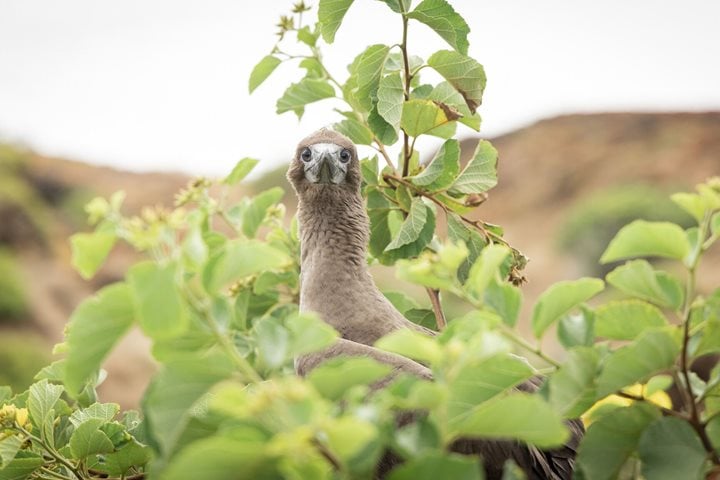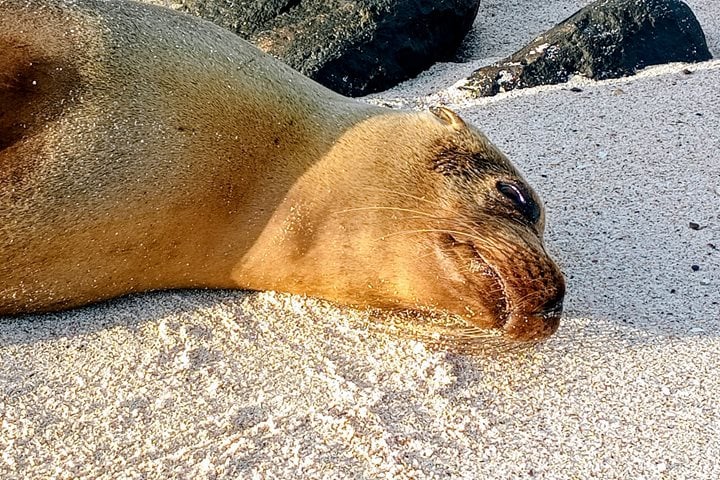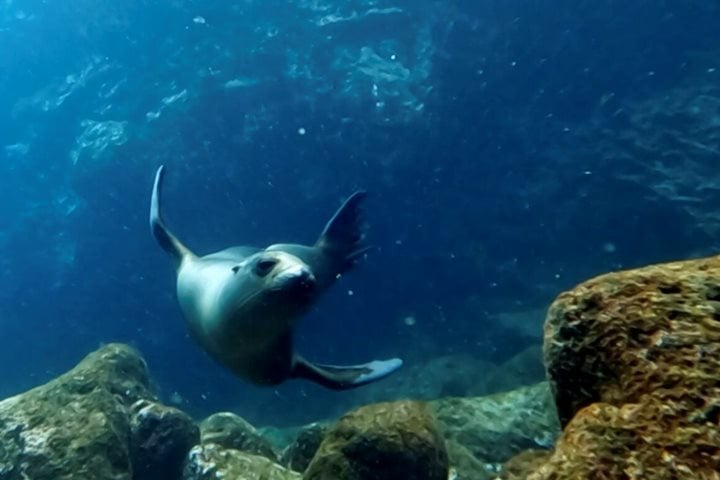After visiting the central islands of the archipelago, we headed south towards Floreana. One of the most beautiful islands in the Galapagos, Floreana was named in honor of the first president of the Republic of Ecuador, General Juan José Flores. When it was annexed to Ecuador in 1832, the island was designated as the first capital of the archipelago.
With the first rays of sun, we boarded the Zodiacs and headed for the calm waters of Post Office Bay. We started the day with kayaking along the mangroves and inlets. In the treetops, we could see pelicans and some lava herons. In the ocean, sea turtles, rays, sea lions, and many colorful fish swam very close to our guests. The gentle sea breeze cooled the atmosphere. Little by little, the sun appeared through the clouds to warm the atmosphere a little and illuminate the mountains that, until then, looked cloudy. We were able to observe the geology of the place. The island’s mountains were once volcanoes, and below them, solidified lava flows as a silent witness to the island’s geological past, which happened millions of years ago.
After touring the western part of the bay, we headed towards the landing beach to visit the enigmatic barrel used by buccaneers, pirates, and the first visitors to the archipelago hundreds of years ago. The post office barrel is considered the oldest mail system of the Eastern Pacific. We had the opportunity to share some of the human history of the Galapagos and the early settlers of Floreana Island.
After breakfast, National Geographic Islander II was repositioned off Champion Islet. The temperature of the ocean was around 64 °F, which was not an impediment for our guests to enjoy an incredible snorkeling around the islet. We saw sea turtles, whitetip reef sharks, and many colorful fish along the rocky seabed. Curious sea lions invited our guests to play with them!
Finally, our last visit was to Punta Cormorant, north of Floreana. Midafternoon, we disembarked on a beach with greenish sand. The green color is due to the high concentration of olivine, a glassy mineral that is abundant in the area. Walking inland, we reached a lagoon behind the beach. We saw some flamingos whose pink color contrasted with the green water. Walking inland, we reached the second beach with completely white sand. Its composition, unlike the first, is entirely organic. We saw stingrays and many sea turtles waiting for darkness to leave the ocean for the highest part of the beach to nest. In the air, pelicans and blue-footed boobies were in a feeding frenzy to catch some fish.
It was almost 6:00 p.m. when we decided to come back to National Geographic Islander II. The sun, now in the west, reminded us that today was a unique day that will live in our memories forever.







